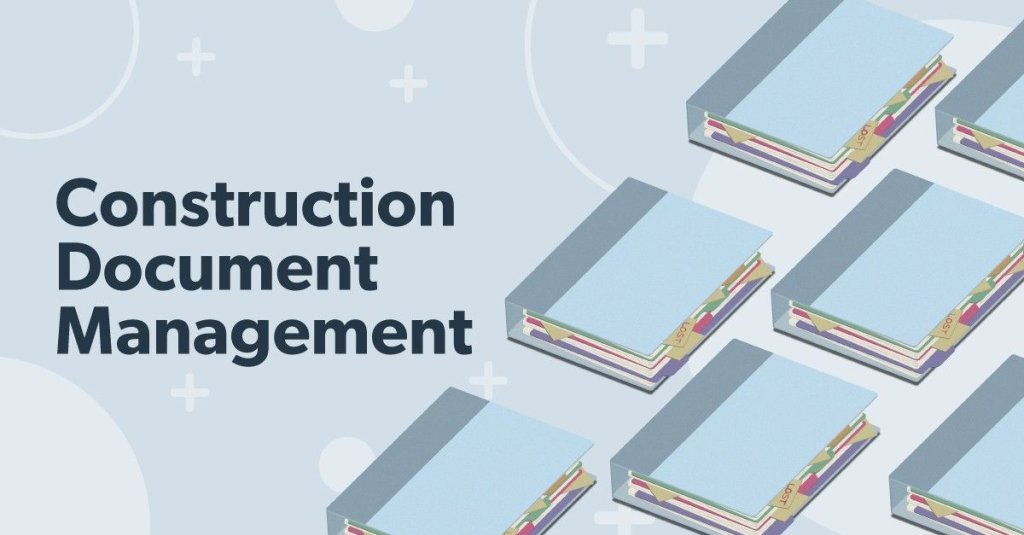Understanding Company: Boost Efficiency with Construction Document Management
Understanding Company: Boost Efficiency with Construction Document Management
Blog Article
Getting Seamless Task Shipment: Engineer's Comprehensive Approach to Building And Construction Document Monitoring
One crucial aspect typically undervalued is the administration of building and construction records, which offers as the backbone of every project. As engineers browse the complexities of layout, control, and implementation, a detailed technique to record monitoring arises as a linchpin for attaining seamless project distribution.
Relevance of Construction Record Monitoring
Reliable construction record administration plays an important role in guaranteeing project success by helping with smooth interaction and organization throughout the building and construction procedure. By maintaining precise and updated building files, architects can effectively interact with professionals, subcontractors, and other stakeholders entailed in the job. These documents offer as a recommendation factor for all celebrations, ensuring that every person is working from the very same set of details and minimizing the possibility of misunderstandings or mistakes.
In addition, building record administration assists architects remain arranged by supplying a centralized location for all project-related information, including drawings, specs, contracts, and correspondence. This company allows and enhances the decision-making process for quick access to crucial project information when needed. In addition, proper paper management can boost project effectiveness, reduce expensive delays, and eventually cause the successful conclusion of building and construction tasks. Designers that focus on building and construction document administration established a solid structure for task success and demonstrate a commitment to providing high-grade outcomes.
Crucial Element for Efficient Paperwork

Offered the vital duty that well organized and exact construction paperwork plays in making certain project success, it is important to recognize key components that contribute to efficient paperwork monitoring. Firstly, succinct and clear interaction is extremely important. All stakeholders need to recognize the documentation demands and have the ability to access and translate the info easily. Secondly, establishing standardized layouts and procedures ensures consistency throughout all job documents. This includes calling conventions, file frameworks, and modification control to protect against errors and confusion. Regular evaluations and updates are essential to keep paperwork reflective and current of the job's progression. This practice assists identify any inconsistencies or modifications that need to be dealt with immediately. Implementing a durable record administration system that enables for variation control, gain access to limitations, and audit tracks significantly boosts the organization and security of job documentation. By integrating these key components into building and construction file monitoring practices, engineers can streamline procedures, reduce errors, and inevitably add to the effective distribution of jobs.
Utilizing Innovation for Document Organization
Leveraging innovative electronic tools and software application systems is crucial in boosting the organization and ease of access of building paperwork. Building firms can enhance their record monitoring processes by executing specialized software program designed for the construction market. These devices offer functions such as variation control, cloud storage space, and joint editing and enhancing capabilities, allowing employee to deal with files concurrently and making certain every person has access to the most up-to-date information.
One secret advantage of utilizing innovation for record organization is the ability to create a centralized database for all project-related documents. By saving documents in a protected electronic environment, designers can quickly browse, get, and share information with stakeholders, lowering the risk of version conflicts or lost data. Furthermore, advanced software options commonly include metadata tagging and indexing performances, enabling users to categorize documents successfully and fetch them rapidly when needed.
Collaborative Strategies With Job Teams
To enhance project results, architects need to embrace collective approaches when functioning with project groups to guarantee smooth communication and control throughout the building and construction process. Cooperation with project groups is necessary for architects to effectively take care of construction projects. construction document management. By promoting open interaction and team effort amongst all stakeholders, designers can improve decision-making procedures, address potential problems proactively, and make sure that every person is straightened with the project goals
Architects ought to develop clear lines of communication with engineers, service providers, clients, and other vital staff member from the start of the job. Routine meetings, progress updates, and feedback sessions need to be set up to maintain everybody informed and involved. Making use of collective job management tools can additionally facilitate real-time details sharing and record cooperation, boosting openness and effectiveness.

Ideal Practices for Record Variation Control

Final Thought
To conclude, reliable building file management is critical for right here accomplishing smooth job delivery. By concentrating on crucial elements such as variation, organization, and cooperation control, engineers can make sure that all job teams are functioning from current and exact details. Using innovation can improve the paperwork process and improve total task efficiency. It is important for architects to implement ideal techniques in paper administration to successfully navigate the intricacies of building tasks.
Effective construction record monitoring plays a vital role in making sure project success by helping with seamless communication and company throughout the building and construction process. Additionally, appropriate record management can improve job performance, reduce expensive hold-ups, and ultimately lead to the useful site successful conclusion of construction projects.To optimize job results, designers need to accept collective strategies when functioning with task groups to make sure smooth interaction and control throughout the building and construction procedure. Cooperation with task teams is crucial for architects to effectively handle building tasks.In the world of collaborative construction task administration, preserving exact control over document versions stands as a crucial practice for making sure job integrity and communication.
Report this page